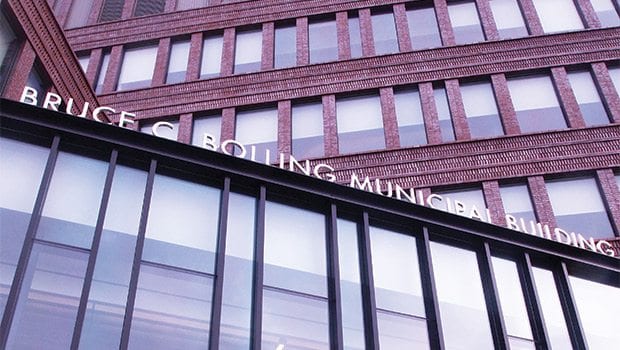
Yawu Miller
Since December, when city officials released a draft of a report citing a surplus of seats in the Boston Public Schools, Mayor Martin Walsh and school officials have cited the report’s findings: 57,000 students in a system with 93,000 seats.
The report, which recommends closing 20-50 schools, estimated a potential savings of $51 to $81 million a year, along with a one-time windfall of $120 to $200 million from the sale of the school buildings.
But this week a parent group obtained through a Freedom of Information Act request, longer drafts and supporting documents detailing the thinking the consultant group McKinsey & Company used to arrive at its estimate of 93,000 seats in Boston’s 126 school buildings.
The alleged surplus of 36,000 seats, activists say, ignores the school department’s current student-teacher ratio and takes into consideration the overall square footage of school buildings, rather than looking at usable classroom space.
“McKinsey just did this report with raw square footage,” said Patricia Kinsella, a member of the parent organization Quality Education for Every Student. “Anyone who works in education knows that doesn’t work. They came in for ten weeks, spent $60,000 a week and came out with this report.”
“QUEST asks city and district officials to repudiate McKinsey as a credible source of data on school capacity,” reads a statement from QUEST. “Further, QUEST says city and school officials should halt discussion of school closures, consolidations, or ‘right-sizing’ until there is credible, publicly available, and locally-valid data regarding capacity.”
The issue of school closings surfaced in November after QUEST members said Walsh told them he would like to see the BPS inventory reduced to 90 buildings. Walsh denied making the statement. But parent activists, many of whom are concerned that charter schools will grab BPS buildings as they increase their share of Boston’s school spending, took the mayor’s alleged statement as confirmation of an impending transfer of resources to the city’s growing charter schools.
The McKinsey draft does little to assuage those fears, stating that the consolidation of schools would “[offer] BPS the opportunity to shutter underperforming schools and provide students in those schools with higher performing options.”
City Councilor Tito Jackson suggested that the report is asking the wrong questions.
“The premise of the report is looking at the school buildings through a real estate lens,” he said. “They’re speaking about selling off valuable properties. It’s offensive to look at schools that way. The schools in the oldest public school system in the United States belong to the students.”
Jackson also questioned the report’s recommendations to shutter schools in the Fenway and Copley Square. The BPS schools in the Fenway — Boston Latin School and Boston Arts Academy — are both popular, well-performing schools. And BPS cannot sell off its sole BPS school in Copley Square — the Muriel Snowden International school — according to Jackson.
“The Snowden is in a trust,” he said. “It can’t be sold.”
While the 93,000-seat estimate has become the accepted figure, in 2013 a BPS internal report cited a capacity of 61,338 students. Jackson said the McKinsey report is skewing discussion of BPS capacity.
“We commissioned an organization to do an in-depth analysis,” he said. “For $660,000 they gave us a less-informed study than the one BPS did in 2013.”
While McKinsey & Company’s assessment of school capacity generated the lion’s share of objections from parent activists, the consultants also pointed out other areas where BPS could make cuts.
For example, the report notes that BPS has a higher percentage of students classified as Special Education — 19.5 percent — than other districts in Massachusetts and across the nation, and estimates the district could save $5 million for every drop in a percentage point of SPED students.
The report also notes that the portion of BPS children classified as English language learners — 30 percent — is high, but makes no recommendations for cutting that number.
Transportation is often cited as an area where cost cutting should happen. In the current budget, transportation accounts for $57 million, or 5 percent of school spending. The McKinsey report recommends increasing the minimum distance between a student’s home and his or her bus stop from the current .16 mile to .25 mile for an estimated savings of $6 million to $19 million per year.
Interestingly, the report lists teachers’ salaries and benefits and “large spending items,” but does not include in that category the funding the district pays for per-pupil reimbursements for Boston students who attend charter schools and transportation costs for students who attend charters, parochial and private schools. Those costs account for $130 million, or 11 percent of the BPS budget.
The version of the report BPS released in December cites high per-pupil costs, but downplays the role the high cost of living plays in Boston’s standing. The McKinsey draft obtained by QUEST acknowledges the effect the cost of living has on Boston’s per-pupil spending, “When cost of living adjustments are made to national peer set, Boston’s per pupil spending declines to $12,472, below the peer average of $13,109.”







